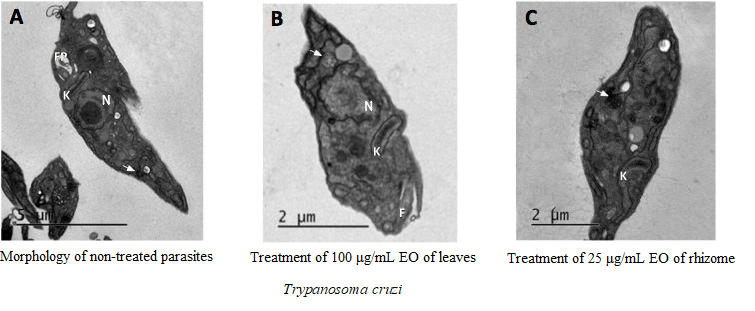JOURNAL 1028
Records of Natural Products
Year: 2019 Issue: 3 May-June
p.268 - 280
Viewed 3895 times.
-
Kathlyn V. Gevú, Helena R.P. Lima, Ilzenayde A. Neves, Érica O. Mello, Gabriel B. Taveira, Laís P. Carvalho, Mário G. Carvalho, Valdirene M. Gomes, Edésio J.T. Melo and Maura Da Cunha
GRAPHICAL ABSTRACT

ABSTRACT
This work aimed to determine the chemical composition of essential oils from rhizomes and leaves of Renealmia chrysotricha Petersen, R. breviscapa Poepp. & Endl. and R. nicolaioides Loes., and to evaluate the biological activities of these oils on three Candida species and the parasite Trypanosoma cruzi. The rhizomes and leaves were collected in the Atlantic and Amazon rainforests. Essential oils were isolated and characterized by gas chromatography. Βeta-Caryophyllene was found to be the most predominant compound in the essential oils of rhizomes and leaves of R. breviscapa, and the rhizomes of R. nicolaioides, whereas (E)-nerolidol was the most abundant compound in the oils of leaves of R. nicolaioides. In R. chrysotricha, α-terpineol, coronarin-E and 1,8-cineole were found to be the most predominant compounds in the essential oils of rhizomes, whereas cis-3-hexenol was predominant in the leaves. The tested oils did not inhibit C. albicans growth at 1000 µg/mL, whereas leaf oils from R. chrysotricha and R. nicolaioides inhibited the growth of C. buinensis and C. tropicalis by about 50%. Essential oils from the rhizomes and leaves of R. chrysotricha exhibited efficient antiparasitic activity against Trypanosoma cruzi. Damage to T. cruzi epimastigotes was confirmed by LM and TEM.
KEYWORDS- Zingiberaceae
- rhizomes
- leaves
- terpenoids
- anticandidal activity
- antiparasitic activity.